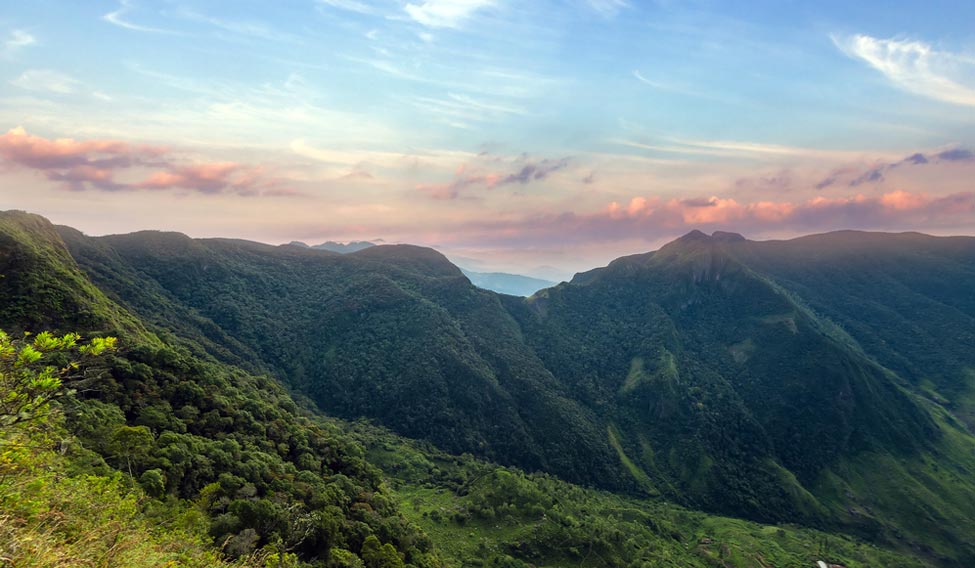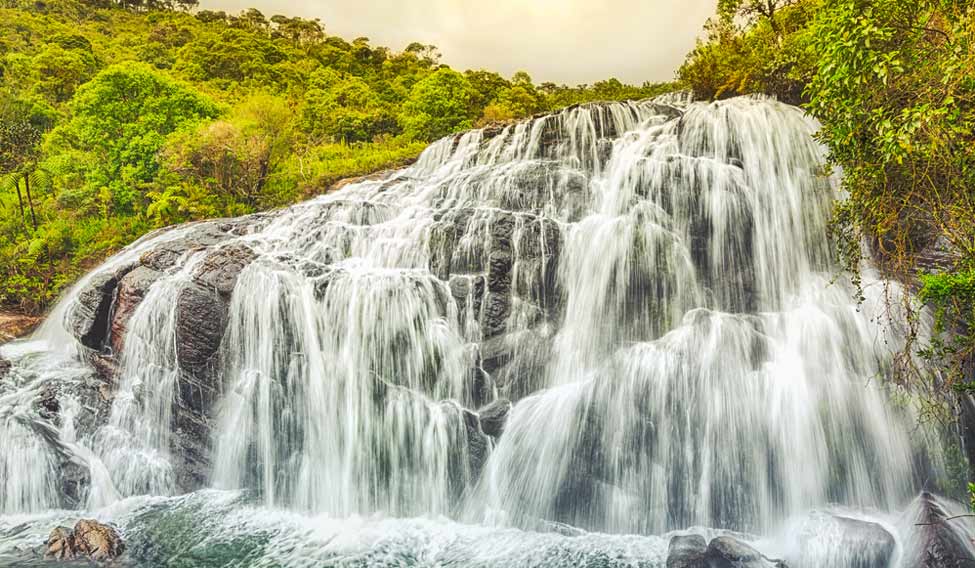My wife Madhavi and I spent a rather hectic but thoroughly enjoyable week in Sri Lanka in December.
We landed in Sri Lanka, often known as the Emerald Isle of Asia, on December 16 and after spending a day and half in Colombo, the capital city, we headed to Nuwara Eliya. We reached the picturesque town, known for its uniquely British homes, names, sylvan tea gardens and beautiful landscape, in the evening. Next morning, we had plans to trek across Horton Plains, one of Sri Lanka’s most happening destinations.
Our chauffeur cum guide Anushka told us about the awesome view of the sunrise at Horton Plains, which also meant starting by 4 am. We politely declined the offer and decided to start only by 7 am.
It took us an hour to cover the distance of 29 kms from our hotel to the entrance of Horton Plains. The scenery on the way was awesome. It was like driving through the famed English countryside in spring—with gentle sloping vales and undulating meadows. It brought alive memories from Thomas Hardy’s Far from the Madding Crowd. We even saw a herd of typically English cows. On the way we got a glimpse of the fabled Adam’s peak.
“This peak is a repository of legends. According to one myth, which owes its genesis to an account by Ibn Battuta, the legendary Arab explorer, the peak gets its name from Adam. After being banished from Paradise, Adam spent 1,000 years at this spot, lamenting his fate. According to Venetian explorer Marco Polo, Adam lies buried here. Christians believe that St. Thomas, one of the Apostles climbed the mountain during his mission to India and Persia, and left a footprint on the summit. Buddhists believe that Buddha left his footprint at the peak during one of his visits to the island nation. Hindus, on the other hand, see the footprint as that of their Lord Shiva. Thus it is a peak for every faith,” I told Madhavi trying to impress her with my knowledge garnered from dipping into Marco Polo Travel Handbook.
 View from the World's End at Horton Plains National Park, Sri Lanka
View from the World's End at Horton Plains National Park, Sri Lanka
As we approached Horton Plains our driver gave us the bad news. He said, “Madam you cannot go for a trek in slippers, and sir, you should have been wearing sports shoes not leather slip-ons.”
“We have no choice now. We’ll try to make the best of a bad situation,” I said, mentally kicking myself and cursing the tour operator for not informing us earlier.
“Horton Plains are Sri Lanka’s most elevated plateau. In the local lingo, the plains are called Maha Eliya which roughly translates to open plains,” I shared a few more nuggets of wisdom as we started on the trail.
We soon came to a Y Junction and were faced with two choices. Either we could directly go to Baker’s fall, one of the most famous falls in Sri Lanka, which was at a distance of 2.6 kms from where we stood, or cover the entire loop which included the Big World’s End and Little World’s End—two cliffs with a drop of around 1000 metres and 600 metres respectively. The complete circuit involved trekking a distance of 9 kms.
“Let’s go first to Baker’s fall and then take a call,” I told Madhavi. For once she agreed right away and off we started on the trek which would turn out to be easily the toughest we have ever experienced.
Right at the beginning we came across a tablet on which was inscribed: “Protect the Plains: Horton Plains is one of the most heavily visited parks in Sri Lanka. Please help us protect this unique ecosystem, which is now declared as a part of the Central Highlands World Heritage Site. So stay on the trails. Do not pick flowers, throw stones and other objects into the water or set fire to the grasslands.”
Though the sun was shining brightly, the wind was rather cold and sharp. The mud track stretched as far as we could see. On either side we had meadows leading up to the hills.
 Baker's falls at Horton Plains, Sri Lanka
Baker's falls at Horton Plains, Sri Lanka
Grass, tree ferns and rhododendrons created a luxuriant carpet of green. The laughter of the streams punctuated the symphony of birds and cadence of the breeze. Tiny ponds and the not-so-tiny lakes dotted the landscape. The crystal clear water, the bright cloudless sky bathed in blue were like signatures of nature declaring its surreal dominance on all things ersatz. The trail was a kaleidoscope of narrow paths, rock-strewn corridors and undulating treks. As we negotiated the rocks in our completely inadequate footwear I kept invoking my guardian angel. I knew one tiny slip and we would cease to be ambulatory for quite some time.
The fellow hikers seemed like representatives of the United Nations—of all colours, creeds and cultures. The only thing which was common was our state—one of complete breathlessness as we huffed and puffed our way like participants in a run which is a combination of a marathon and an obstacle race.
Soon we reached a bonsai forest. The narrow path was ensconced by trees and bushes on either side. The track culminated in a clearing and we could hear the sound of gushing water. The actual waterfall was way down a flight of steep stairs, which our rather tired legs found a trifle difficult to negotiate.
Finally, when we got our first full-on look we were mesmerised. It was a stunning sight—the water falling in lush cascades, the misty spray, the swirling foam, the black-granite rocks, the canopy of green and the pristine blue sky. We stood gazing at the spectacle frozen, just living in the moment, experiencing the unadulterated beauty and enjoying the shower of dew drops unleashed by the waterfall.
 Sri Lankan sambar deer in Horton Plains National Park
Sri Lankan sambar deer in Horton Plains National Park
Finally we managed to tear ourselves away from the awesome and return to the somewhat mundane trek back.
“Shall we try to go to the Little World’s End or its big brother?” Madhavi asked.
“Our tryst with the Big World’s End may result in a the end for us,” I dryly replied and turned back.
Our return trip was a lot slower. After an hour we came to a meadow and Madhavi flopped down and stretched out. These little hiatuses continued till we finally sighted the exit gate.
We were completely exhausted but totally fulfilled as we bid goodbye to the exquisite canvas of sparkling colours, labyrinthine topography and brilliant hues—Horton Plains were anything but plain.






